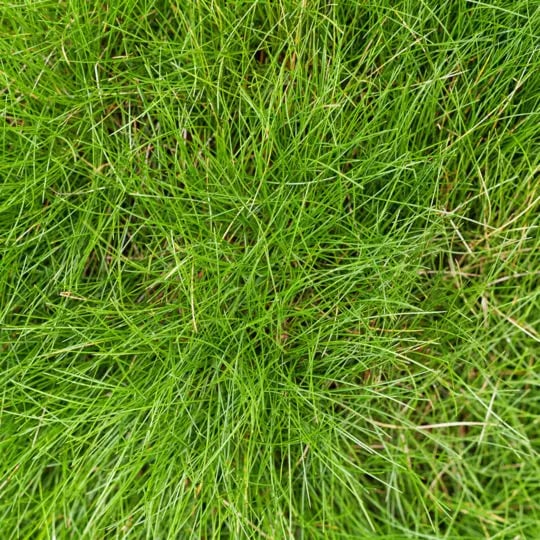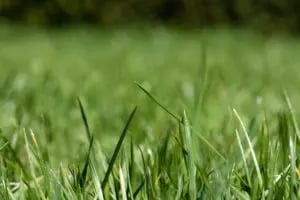What Are Those Thick Blade Grass Clumps?

Sometimes it’s hard to identify the impurities in your lawn. Some might be obvious, like dandelions with their easy-to-recognize color and then wispy appearance. When it starts to blend in with your grass, that’s when it becomes difficult to know if something is actually wrong, or if your grass is just growing funny. Those thick blade grass clumps you might find are not a normal part of your lawn. They’re a weed called fescue.
Fescue: Your Cause of Thick Blade Grass Clumps
What It Is
Tall fescue is actually a common grass that has been used in the US for a long time. It has its purposes, but if your lawn is a different turf type, it stands out like a sore thumb. The thick blade grass clumps are a healthy green color and low-maintenance, making it a good choice for areas along highways and other infrequently mowed areas. It is also used for athletic fields and parks because of its fast growth and beautiful green color that it maintains year-round unless extreme winters or droughts.
With that said, it’s not what you want for your lawn as the thick blades can grow in a clumps sprouting in different directions, breaking up the neatly maintained appearance of your ryegrass or bluegrass lawn.
There are many weeds that can disrupt the luscious look of your lawn. Explore our Lawn Weed Library to learn about the other broadleaf weeds, grasses, and vines that invade lawns in Pennsylvania, Delaware, and New Jersey.
Learn about other reasons why your grass could be growing in clumps here.
How to Get Rid of It
Fescue is difficult to get rid of. It has deep roots and grows quickly, so it effortlessly competes with the grass of your lawn. Your best bet is to dig deep with your shovel as any weed control spray will also kill off your healthy grass. Be sure to get out all of the root system so it doesn’t continue to grow after you remove the blades.
 Thick Blade Grass Clump Prevention
Thick Blade Grass Clump Prevention
Like controlling many weeds, your first step for fescue prevention should be to get your lawn as healthy as possible. When your turf is healthy, the root system takes up too much space to allow for unwanted weeds and grasses to thrive. Good practices include:
- Water well. We recommend giving your lawn a good soaking once or twice a week rather than a little bit every day.
- Aerate and seed. Grass roots go deep into the ground and take up a lot of space. When your grass roots are healthy, there isn’t much empty space left in the soil for weeds to take root. When you aerate before seeding, you can deposit the seeds right into the soil and ensure there is plenty of air available for the roots.
- Mow the right way. Let grass grow long enough to create shade at ground level and keep moisture in the soil. It’s recommended you only cut 1/3 of the grass blade each time you mow to prevent stress.
Take Control of Your Lawn.
Fescue stands no chance in your ryegrass or bluegrass lawn when you work with Green Lawn Fertilizing. Our Fertilizing and Weed Control Service is designed to prevent lawn invaders, like fescue, from destroying your dream yard. We also know the times it is appropriate to use this turf type. Call us today for a free quote.